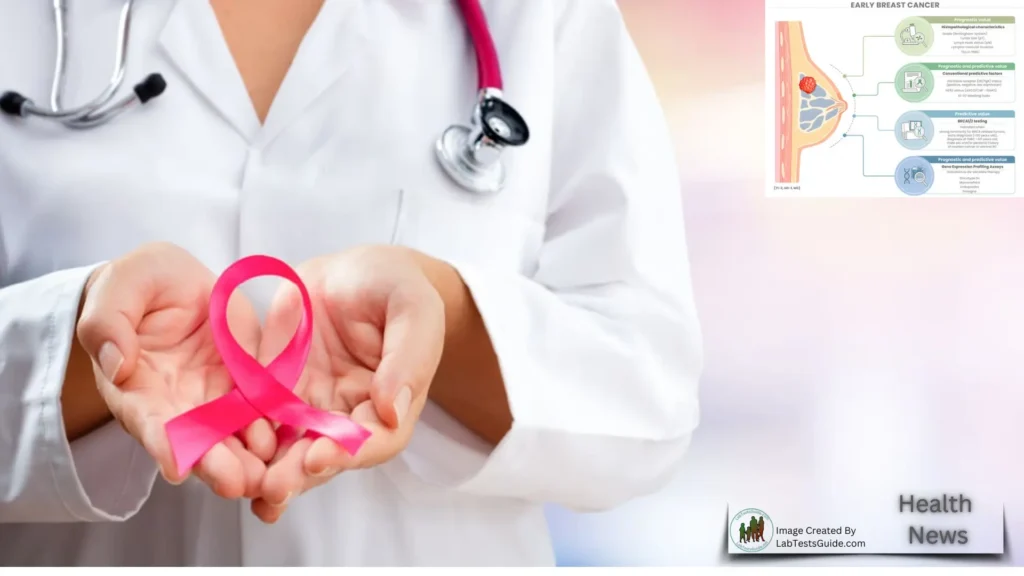Alarming Rise in Late-Stage Breast Cancer Diagnoses Across All Age Groups in the U.S.
The prevalence of late-stage breast cancer diagnoses has risen dramatically across all age groups and ethnicities in the U.S. over the last two decades, according to a groundbreaking study published in Radiology. Researchers analyzed data from 2004 to 2021, revealing troubling trends that call for urgent action to enhance early detection and treatment efforts.

A Steady Climb in Late-Stage Diagnoses
The study examined data from the Surveillance, Epidemiology, and End Results (SEER) Program, which covers nearly half of the U.S. population. It found that the largest annual percentage increase in late-stage breast cancer diagnoses occurred among women aged 20-39, with a 2.9% yearly rise. Women aged 40-74 experienced increases of 2.1% from 2004 to 2012 and 2.7% from 2018 to 2021. Among women aged 75 and older, the rate rose by 1.4% annually over the study period.
Lead researcher Dr. R. Edward Hendrick, a clinical professor at the University of Colorado School of Medicine, described the findings as “alarming,” particularly given the undercounting of cases in 2020 due to the COVID-19 pandemic. “Our study indicates that we are failing to detect breast cancers early enough in U.S. women of all ages,” Hendrick said.
Disparities Among Ethnic Groups
The study also highlighted significant racial and ethnic disparities. Native American women showed the highest annual increase in late-stage diagnoses at 3.9%, followed by Asian women at 2.9%. Black women had rates 55% higher than their white counterparts, despite experiencing smaller annual increases (0.86%). Hispanic women saw an annual increase of 1.6%. Notably, while white women experienced a 1.7% annual increase between 2004 and 2012, their rates stabilized thereafter.
The Role of Screening and Systemic Factors
The researchers attributed the rise in late-stage diagnoses to several factors, including inconsistent screening guidelines, a lack of a national screening program, rising obesity rates, and limited access to healthcare. Dr. Debra L. Monticciolo, co-author and past president of the American College of Radiology, emphasized that fewer than 50% of U.S. women participate in regular breast cancer screening. “This means we miss the chance to catch early-stage cancers, leaving many women to face a diagnosis at a more advanced, harder-to-treat stage,” Monticciolo explained.
The COVID-19 pandemic exacerbated these issues, with a significant drop in mammograms, especially among older and minority women. “This population tends to get left behind during any stress on the healthcare system,” Monticciolo added.
The Impact of Guidelines
The U.S. Preventive Services Task Force (USPSTF) recommends mammograms every two years for women aged 40-74, but excludes women over 74 despite evidence of the benefits of early detection. Younger women, who often face aggressive and fast-growing cancers, also fall outside the current screening recommendations. The National Comprehensive Cancer Network suggests breast cancer risk assessments by age 25 to better identify at-risk populations.
Call to Action
Experts are urging immediate action to address the rising rates of advanced breast cancer. This includes expanding access to screening, addressing disparities in healthcare access, and refining guidelines to include younger and older women. Dr. Corey Speers, chair of radiation oncology at University Hospitals Seidman Cancer Center, stated, “We must work to ensure every woman has the opportunity for early detection and prioritize research to understand and mitigate the factors driving these trends.”
The study underscores the importance of vigilance and education. Women should monitor for symptoms such as lumps, skin changes, or nipple retraction, and seek timely medical evaluation. As Dr. Lisa Abramson of Mount Sinai in New York City noted, “This study should galvanize us to take action against gaps in screening and treatment.”
By addressing these challenges head-on, researchers and healthcare providers hope to reverse the trend and improve outcomes for women across the country.
References
- Radiologists chart ‘alarming’ uptick in late-stage breast cancer diagnoses across all age groups – Radiology Business (Accessed on 11, 2024)
- Study reveals increase in late-stage breast cancer diagnoses in US – Medical Express – (Accessed on 11, 2024)
- More Women Are Being Diagnosed With Breast Cancer at Later Stages – The Neighbor – (Accessed on 11, 2024)
- Late-stage breast cancer diagnoses increase dramatically in U.S. – UPI – (Accessed on 11, 2024)
Possible References Used







